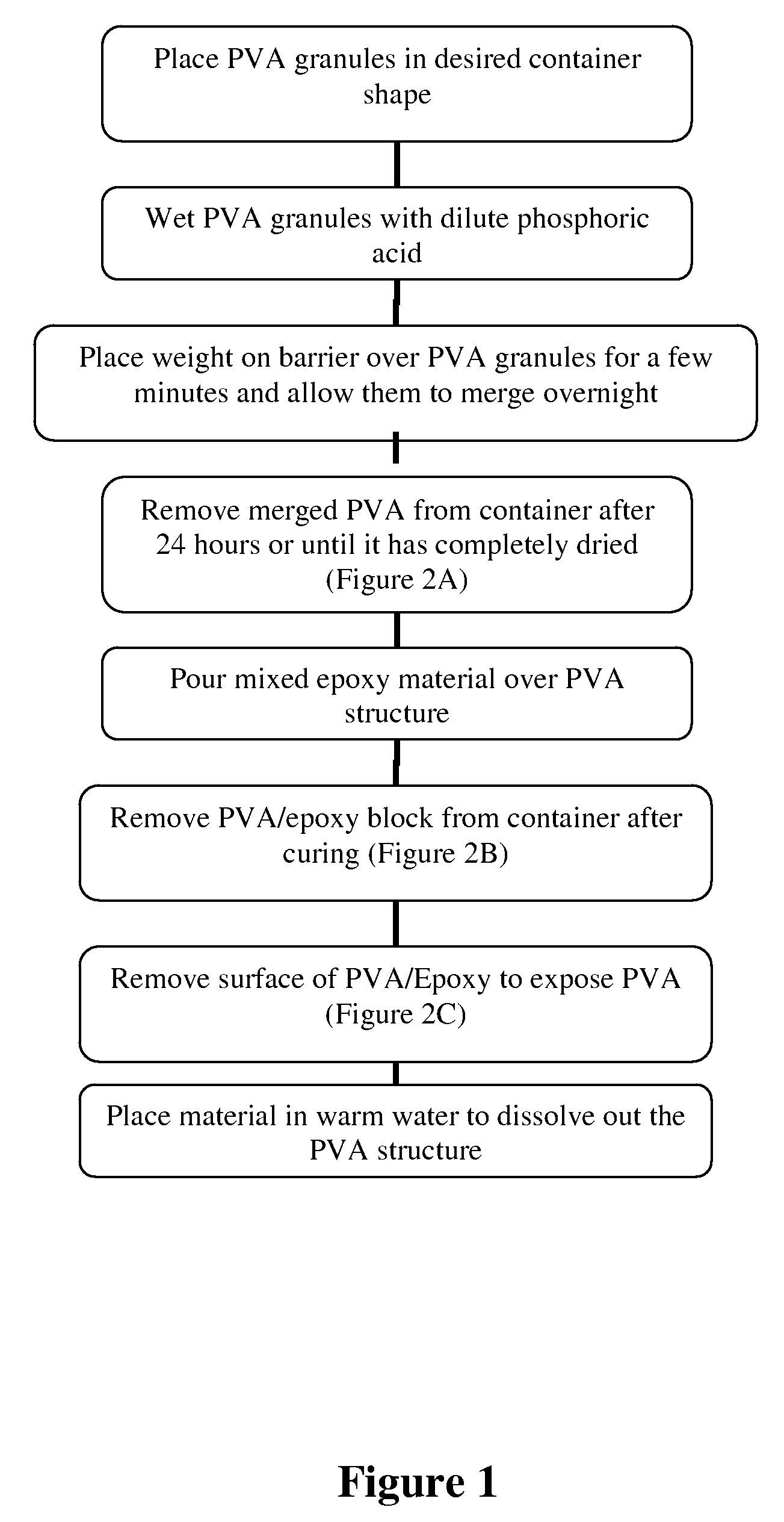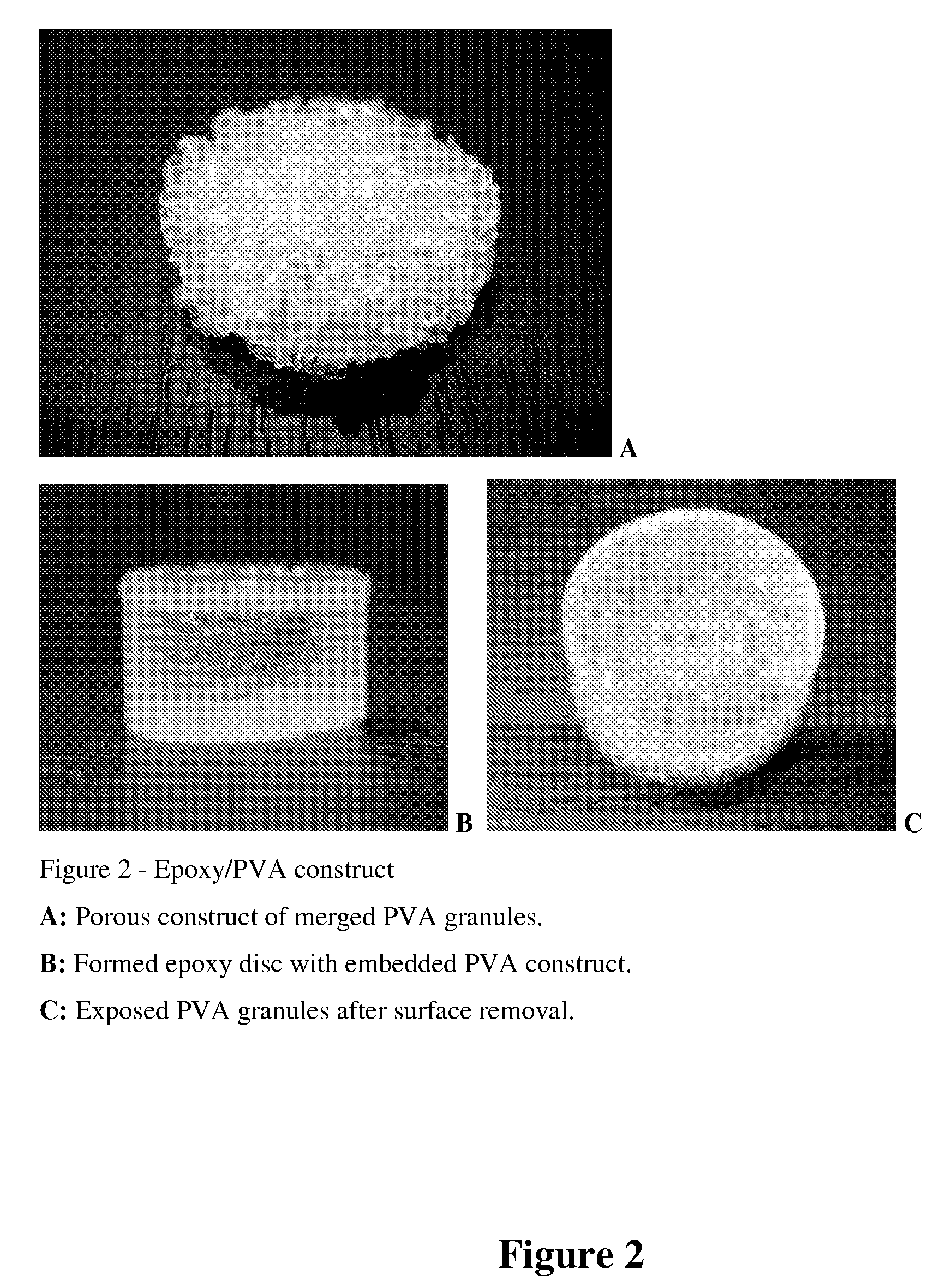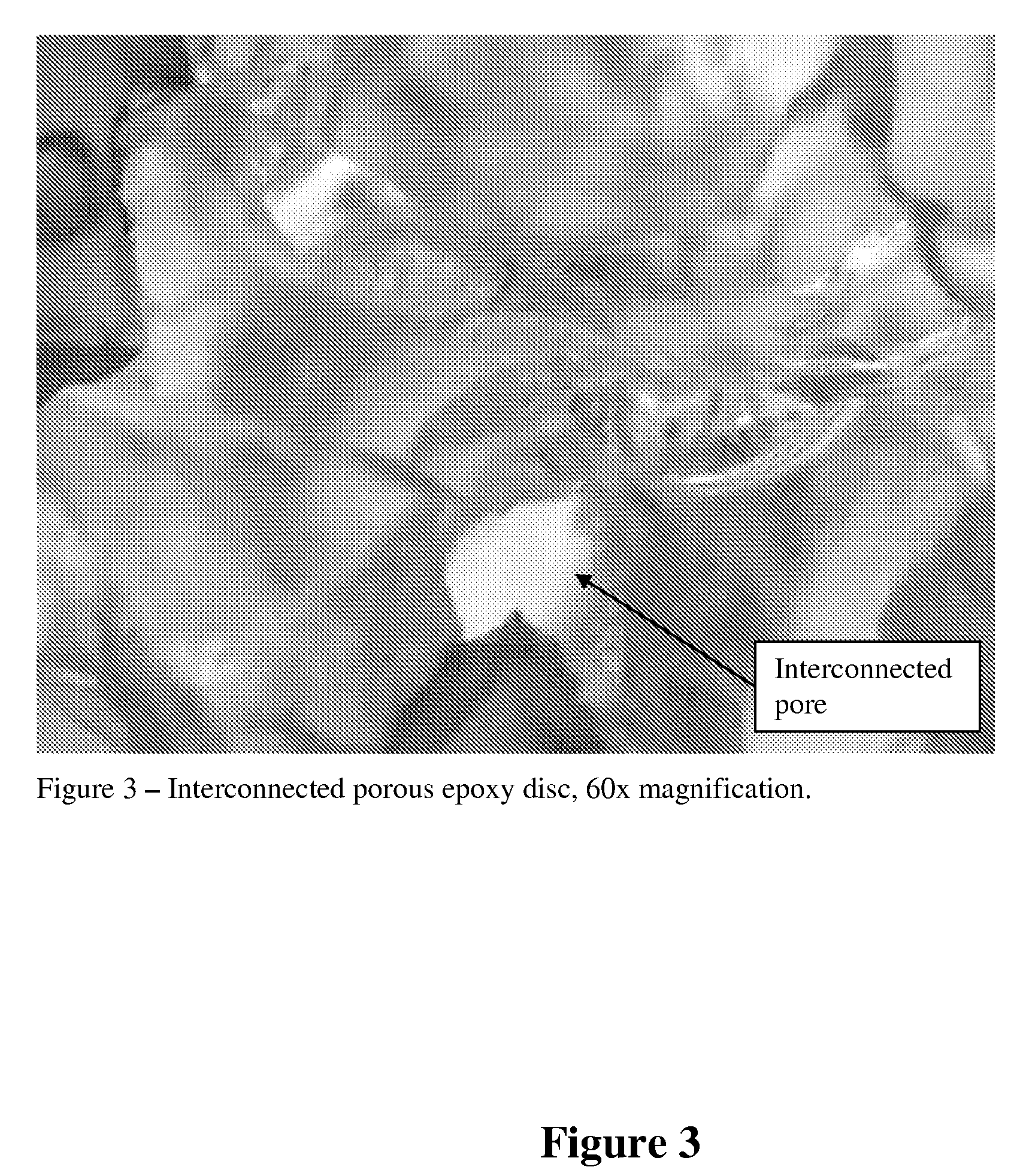Method of producing interconnected volumetric porosity in materials
a volumetric porosity and material technology, applied in the field of porous materials, can solve the problems of metal implants often loosening at the interface with bone, metal implants fail, metal implants,
- Summary
- Abstract
- Description
- Claims
- Application Information
AI Technical Summary
Benefits of technology
Problems solved by technology
Method used
Image
Examples
Embodiment Construction
[0022]In the following detailed description of the preferred embodiments, reference is made to the accompanying drawings, which form a part hereof, and within which are shown by way of illustration specific embodiments by which the invention may be practiced. It is to be understood that other embodiments may be utilized and structural changes may be made without departing from the scope of the invention.
[0023]Bone Architecture
[0024]Porosity, apparent densities, and osteoconductive environment distinguish cortical and trabecular bone from one another. Cortical bone is defined as bone with less than 30% porosity (typically 5-10%). Porosity of trabecular bone is typically 50 to 90%. Pore sizes range from 50-450μm. Trabecular bone can be described architecturally as a bridging network of trabeculae forming a series of interconnected pores.
[0025]Apparent density of any solid is defined as the ratio of mass to bulk volume. Apparent density of human femoral cortical bone is in the range of...
PUM
| Property | Measurement | Unit |
|---|---|---|
| Tg° | aaaaa | aaaaa |
| Tg° | aaaaa | aaaaa |
| porosity | aaaaa | aaaaa |
Abstract
Description
Claims
Application Information
 Login to View More
Login to View More - R&D
- Intellectual Property
- Life Sciences
- Materials
- Tech Scout
- Unparalleled Data Quality
- Higher Quality Content
- 60% Fewer Hallucinations
Browse by: Latest US Patents, China's latest patents, Technical Efficacy Thesaurus, Application Domain, Technology Topic, Popular Technical Reports.
© 2025 PatSnap. All rights reserved.Legal|Privacy policy|Modern Slavery Act Transparency Statement|Sitemap|About US| Contact US: help@patsnap.com



